#agile for it services
Explore tagged Tumblr posts
Text
Know Spotify's Agile Transformation Journey with Benzne Consulting
Spotify is a music streaming company that has been praised for its agile transformation. The company has adopted a number of agile practices, including:
Scrum: Spotify uses Scrum to manage its projects. Scrum is an iterative and incremental framework that breaks down projects into smaller, more manageable tasks.

Kanban: Spotify also uses Kanban to manage its work. Kanban is a visual framework that helps teams track their work and identify bottlenecks.
Continuous delivery: Spotify practices continuous delivery, which means that it releases new software to production on a regular basis. This helps the company to quickly respond to customer feedback and improve its products.
Spotify's agile case study has been successful in helping the company to:
Increase innovation: Spotify has been able to release new products and features more quickly than before.
Improve customer satisfaction: Spotify's customers are more satisfied with the company's products and services.
Reduce costs: Spotify has been able to reduce its development costs by adopting agile practices.
If you are considering an agile transformation for your own organization, Spotify's experience can be a valuable resource.
Planning an Agile Transformation by Benzne Consulting with Utmost Ease
An agile transformation is a complex undertaking that requires careful planning. Here are some key steps to consider when planning your agile transformation:
Assess your current state: Before you can start planning your transformation, you need to assess your current state. This includes understanding your current processes, culture, and challenges.
Define your goals: What do you hope to achieve with your agile transformation? Once you know your goals, you can start to develop a plan to achieve them.
Choose the right agile framework: There are many different agile frameworks available. Choose the one that best suits your organization's needs and culture.
Get buy-in from stakeholders: Your agile transformation journey will be more successful if you have the buy-in of all stakeholders. This includes your employees, customers, and management.
Start small: Don't try to change everything at once. Start with a small pilot project and learn from your mistakes.
Be patient: Agile transformation takes time. Don't expect to see results overnight.
Get Better Agile Estimation and Planning with Benzne’s Approach
Agile estimation and planning are essential for any agile team. These practices help teams to estimate the time and resources needed to complete a task, and to plan their work accordingly.
There are many different agile estimation techniques available. The best technique for your team will depend on the size and complexity of your projects.
Some popular agile estimation and planning techniques include:
Story points: Story points are a relative unit of measurement that teams use to estimate the size of a task.
Planning poker: Planning poker is a group estimating technique that helps teams to arrive at a consensus estimate.
Timeboxing: Timeboxing is a technique that limits the amount of time that can be spent on a task.
Agile estimation and planning are essential for any agile team. By using these practices, teams can ensure that they are delivering value to their customers on a regular basis.
Know More:-https://benzne.com/
#agile coaching#agilie estimation and planning#agile transformation journey#agile for healthcare#agile for it services
0 notes
Text
Happy Fourth Birthday Forte!
I love you so much and am ao grateful to have you every single day.
Your goofy and genuine personality brings me so much joy. Whether it's me laughing at your not so subtle thievery of a sock or finding my keys that I've misplaced for the umpteenth time. From the agility ring to the real world you are my trusted teammate.
I truly treasure the bond and relationship we've built. I love our simple days together playing in the yard, our adventure days out in the woods, and our pre sleep snuggle sessions.
Your steadfast presence and earnest commitment to your job continues to allow freedoms and experiences that otherwise be inaccessible to me.
You are such a genuinely good natured soul. From your willingness to help me raise an under socialized Malinois puppy to never taking offense at the bossy little dog who rules the roost in this house.
I love you so, so much.










#dogblr#belgian tervuren#forte#psychiatric service dog#service dog#dog agility#happy birthday to my best boy
47 notes
·
View notes
Text

Just a reminder that kennel cough season is again upon us. Today, at Benton's (acd mix, right) agility class the final student arrived and her dog came in and laid down in his crate and made a sound like he was choking slightly on a treat. I assumed he'd done that. Until the sound came again five seconds later, and again. And again.
"Is he choking on something?" asked the instructor after about 15 seconds of coughing.
"Oh, no. He's just started making this sound sometimes. I think it's because he's excited. It's kind of cute."
The dog makes a horking, horrible cough.
"He needs to go home and stay home for two weeks," says the instructor. "And he needs a vet."
She caught it in less than a minute. Within two minutes she was sanitizing the area around where that dog has been. It was impressive, but now Benton has been exposed to what's probably either kennel cough or canine flu or any of the other communicable coughing illnesses.
Tribble, the greyed brindle next to him, is 13 years old. She has dementia. Benton is her emotional support friend. She takes her emotional cues from him. Without him, she gets very upset and can't tolerate being out of our sight. So I can't quarantine him from her for weeks over a two minute, distanced exposure. But she's elderly and if she catches something from him, it will be hard on her body.
Please be careful. Check if your dog needs an updated bordatella vaccine. Don't share water or treats. Wash your hands after handling other people's dogs. Ask your instructors at classes to do an email blast about the symptoms of canine respiratory illness and ask people to stay home. Avoid daycare playgroups if you can.
#Kennel cough#Bordatella#Canine flu#Canine respiratory illness#Dog#Dogs#Puppy#Agility#Pets#Canine#Dog training#Service dog#He's not actually one#But I wanted to tag the service dog community#Canine coronavirus#dog sports#Obedience training#Pass this on#benton fraser#australian cattledog#cattle dog mix#cattle dog#Tribble#Boston terrier#Boxer#Mix breed
18 notes
·
View notes
Text

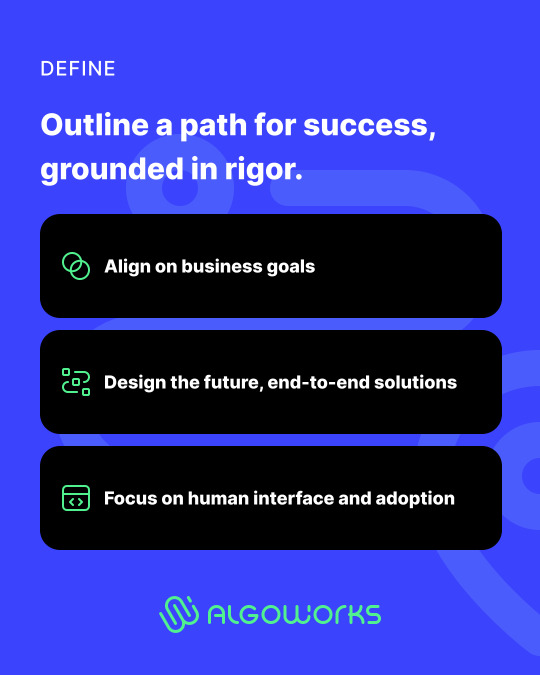

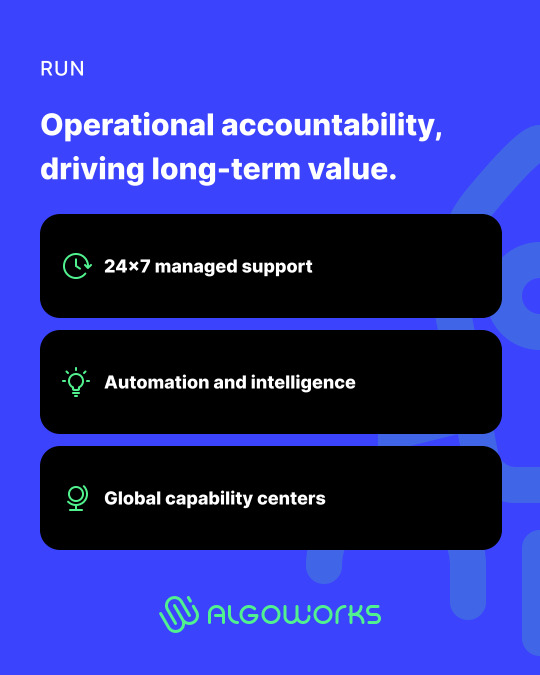
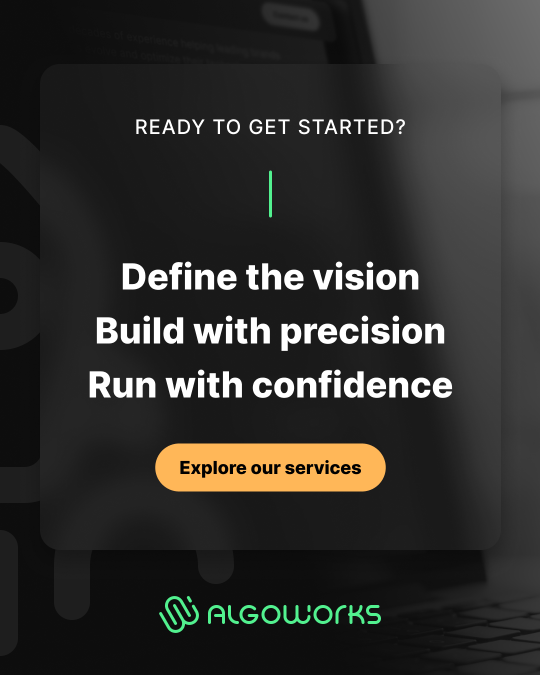
We follow our Define, Build, Run framework to execute flawlessly. From deep listening and 360° planning, to building with agile development and clean code, we ensure performance, security and return on investment through 24/7 monitoring and SLA-backed delivery.
Visit our website to learn more! https://www.algoworks.com/services/
#digital transformation#agile development#clean code#software engineering#cyber security#enterprise solutions#tech innovation#cloud services#innovations#technology#leadership#business excellence
2 notes
·
View notes
Text
Review of JIRA Software by Atlassian
JIRA Software by Atlassian: A Comprehensive Review
Overall
Rating: 4.5
JIRA Software by Atlassian is a powerful tool for project management and issue tracking. Users have found it to be an invaluable asset for their organizations. The overall rating of 4.5 reflects its effectiveness and utility in various scenarios.
Ease of Use
Rating: 4.1
While JIRA is praised for its user-friendly interface and ease of use in setting up different help desks or ticket requests, some users have encountered difficulties, resulting in a rating of 4.1. However, its versatility and user-friendly aspects still make it a solid choice.
Customer Service
Rating: 4.1
Users highly appreciate JIRA's customer service, rating it at 4.1. The support received from Atlassian has been described as amazing, enhancing the overall user experience.
Features
Pros:
Efficient Task Management: JIRA is excellent for creating tasks and logging issues.
Customization: Users can set up different help desks tailored to specific departments.
Integration: It seamlessly integrates with other tools like BitBucket and Zendesk, saving time and streamlining workflows.
Cons:
Task Cloning Issues: Cloning tasks when they are marked as "Done" can be problematic.
Learning Curve: Some users find it challenging to use, leading to misunderstandings and mistakes.
Costly Licensing: The licensing structure, particularly related to plugins, can be costly.
Productivity Impact: In some cases, JIRA has been noted to slow down productivity, requiring permissions for document access.
Value for Money
Rating: Varies
The value for money with JIRA largely depends on the specific needs and budget of the organization. While some find it to be a cost-effective solution, others mention concerns related to licensing costs and limitations.
Likelihood to Recommend
Rating: Varies
The likelihood to recommend JIRA varies, with users providing ratings between 7 and 10 out of 10. It is often recommended for agile teams and project management, but the learning curve and user experience may influence recommendations.
Alternatives Considered
Trello: Some users switched from Trello to JIRA due to JIRA's wider user base and additional features.
Microsoft Project: The transformation to agile practices led to a switch from Microsoft Project to JIRA for some organizations.
Azure DevOps Services: Azure DevOps was replaced by JIRA due to cost considerations and user management issues.
Reasons for Choosing JIRA
Users have chosen JIRA for its flexibility, scalability, and extensive user base. The ability to manage multiple projects seamlessly and the availability of a strong community for support were key reasons for selection.
In summary, JIRA Software by Atlassian offers a powerful solution for project management and issue tracking, with its user-friendly interface, integration capabilities, and exceptional customer service. However, potential users should be aware of the learning curve and potential cost considerations when choosing JIRA for their organization's needs.
#jira software review#jira software reviews#jira reviews#jira review#agile software jira#jira service desk reviews#latest jira software version#jira software vs jira core#jira 2#jirav reviews#who uses jira#why jira#does jira have a free version#jira review reddit#can jira replace microsoft project#can jira be used for non software projects#can jira send reminders#why is jira so popular#is jira software#how jira software works#how to use jira software development#is jira scrum#is jira good#when to use jira#where is jira#which jira version am i using#which jira certification is best#who uses jira software#who makes jira software#why jira is bad
11 notes
·
View notes
Text
2024 Accounting Trends: Top Changes CPAs and Firms Must Watch
Discover the top accounting trends shaping 2024 and beyond. Learn how CPAs, EAs, and accounting firms can thrive by embracing outsourced services, AI, data security, and more. Stay ahead with insights from Unison Globus.
Continue reading: https://unisonglobus.com/the-top-accounting-trends-to-watch-in-2024-beyond/

#Accounting Trends#outsourced bookkeeping and accounting services#future of accounting#outsourced accounting services#Agile Accounting#unison globus#CPA firm growth strategies#accounting industry challenges#CPA trends 2024
1 note
·
View note
Text
i wonder if danmakufu could incorporate fast fourier transforms. like, just for a (mostly) single-frequency function where there's a boundary on the screen that the function passes and after that boundary you get the fast fourier transform. i know you can do weird stuff like youkai polygraph in C but idk of a program that does FFTs in a C-derived language?
#if i do give orime danmaku it'll probably be in the context of a full game anyway#coming to you in 2029#of course it wouldn't all be NMR she's a former agilent employee so she gets UV-Vis and gas/liquid chromatography and FTIR and stuff#and patents and service contracts
6 notes
·
View notes
Text
Life Cycle Management
Electronic Manufacturing Services Across the Product Life Cycle
Avalon the top-rated EMS companies in India renowned for their quality services, technical expertise, and customer satisfaction.
#Design For Excellence (DFX)#Return Merchandise Authorisation (RMA)#BOM Analysis#PLM Agile System For Program Management#electronics manufacturing services#electronic manufacturing services#electronic manufacturing services companies#electronics manufacturing services India#electronics manufacturing services chennai#top Ems companies in India#bestEmscompanies in India#EMS#Life Cycle-Management
2 notes
·
View notes
Text
Big dog little tunnel!
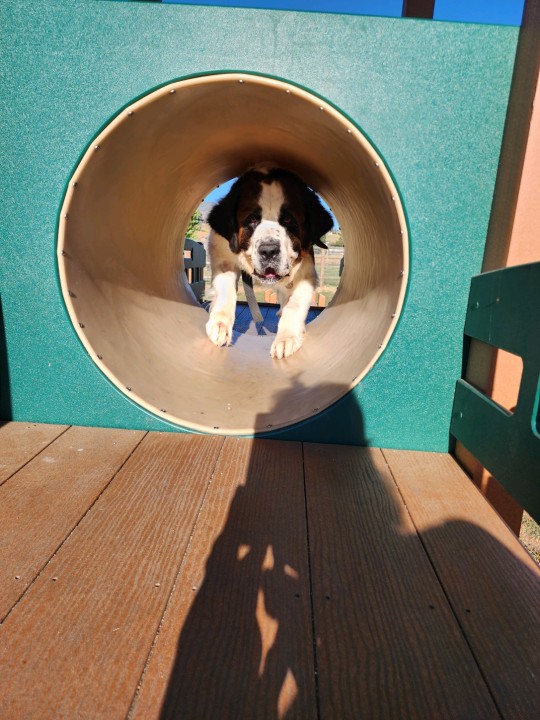

2 notes
·
View notes
Text
Accelerating agile for Healthcare Transformation Fueling Innovation and Efficiency with Benzne

Embrace the potential of agile for healthcare with our customized rapid change solutions. Our team of experts will provide guidance, enabling swift adaptation to evolving needs, fostering seamless collaboration among healthcare professionals, and enhancing patient care delivery. Embrace a culture of innovation and efficiency as you confidently navigate the dynamic landscape of healthcare for remarkable success.
0 notes
Text
I'm still working through the near miss from agility practice. It's been taking a big toll on me and as much as I am loath to admit it - it's because of my disability.
My rambling is going under the cut but that's what this post is. Me trying to sort through why it's shaken me so badly.
There's a few factors all stemming from the same source so I'm going to try to parse them out.
First is the fact that my disability sometimes causes me to lose the ability to move independently and/or speak. I'm lucky that the incident only caused me to be unable to speak. If I'd been unable to move I strongly believe that other dog would have seriously hurt Forte. And it's frightening to know that I can't count on myself to always have the ability to advocate for mine and his safety. It makes me feel incredibly helpless and frustrated in a useless way.
The second is that it dead on hits the mindset I deeply struggle with. This persistent and deep seeded belief that the world is dangerous and I must always keep my head on a swivel and my guard up. That when shit goes down, no one will help me. Logically I know that's not true. I've had plenty of good interactions with others and the vast majority of people are not out to get me. And I have had scenarios where things go sideways and someone does step in to help. But a situation like this preys on my fears that help cannot be counted on. It sends me into a tailspin of feeling like the world is dangerous and the only way to remain safe is to retreat entirely.
The last is that Forte is my big investment into combating that feeling of needing to hide from the world. He's tasks are centered around helping me safely navigate those moments where my disability renders me helpless. So on top of the normal devastation anyone would feel if something bad happened to their beloved dog - I would be losing a big part of my ability to be out in the world at all.
The whole thing sucks and I hate that I'm often pulled to conclusions by twisted reasoning based on fear. But I also can't deny that there is a real basis for said fears when things like this happen. I don't want to give up agility. Both Forte and I enjoy it so much for a multitude of reasons. But part of my brain is screaming that I'm being reckless and shortsighted if I continue. That everything he and I have worked so hard for will end up ruined.
To be clear, I don't think anyone acted maliciously towards me. I think that because the dog was quiet in it's aggression that no one, the handler included, was paying attention. But lack of malicious intent doesn't change that the consequences of my being unable to advocate for myself/dog would have far reaching consequences.
Can I really keep taking the risk in pursuit of something that is, at the end of the day, just for fun? Am I letting my trauma wired brain steer me into a small, isolated life if I quit based on this incident?
I really don't know. And it sucks.
#dogblr#forte#belgian tervuren#psychiatric service dog#dog agility#this would be easier if i had someone i could trust to advocate for us at practice and potentially trials#but i don't for a number of reasons#i was almost late to work the next day#because leaving the house was so hard#and i hate that#i feel so shitty#in both directions#ugh ugh ugh
25 notes
·
View notes
Text
Software Product Engineering Services | Irom Technologies
Considering how the world is moving forward, businesses need more than just software development. They need innovation, quality, and speed. This is where product engineering in software development becomes essential. It helps companies build scalable, secure, and user-focused digital products from idea to launch.
Let us explore what software product engineering services are and why they matter in today’s tech-driven landscape.
Understanding Software Product Engineering Services
What are Software Product Engineering Services?
Software product engineering services involve end-to-end development of a software product. It includes designing, developing, testing, deploying, and maintaining a digital product. These services are not limited to coding alone but cover the full product lifecycle.
They aim to create reliable, scalable, and innovative software solutions that meet both user needs and business goals.
Key Components of Software Product Engineering Services
1. Product Ideation and Strategy
Companies begin with an idea and turn it into a workable product concept.
Teams study the market, analyze competition, and identify user needs. This step ensures the product idea solves a real problem and fits current market trends.
A clear product roadmap is created based on research and user feedback. The roadmap sets the direction for development and aligns stakeholders on goals and milestones.
Stakeholders work together to define goals and success metrics. Everyone involved agrees on what success looks like, which guides progress tracking and decision-making.
#software product engineering#product development services#agile software development#digital transformation#UX and UI design#scalable software solutions#end-to-end software services#product lifecycle management#quality assurance testing#innovative tech solutions
0 notes
Text
Staff Augmentation Companies in USA Enhancing Productivity
Companies need flexible ways to grow their teams considering how fast and quick the advancements are happening in the world. That’s why more businesses now depend on a staff augmentation firm. These firms provide skilled professionals quickly, helping companies stay productive and efficient. Whether a business is scaling up or handling a new project, staff augmentation offers the support it needs. From startups to large enterprises, the demand for staff augmentation is rising fast across industries. Companies now realize that hiring full-time staff is not always practical. Staff augmentation solves this by offering talent exactly when and where it is needed. Additionally, it lets businesses remain agile in a fast-moving market without compromising on quality or time.
Why Staff Augmentation Companies in USA Are Gaining Popularity
Staff Augmentation Companies in USA are helping businesses grow faster and smarter. These companies provide immediate access to skilled talent. As a result, businesses meet goals faster without long hiring processes.
#staff augmentation services#IT staff augmentation#staff augmentation USA#flexible hiring solutions#tech talent on demand#agile workforce#hire developers USA#reduce hiring costs#project-based staffing#staff augmentation company
0 notes
Text
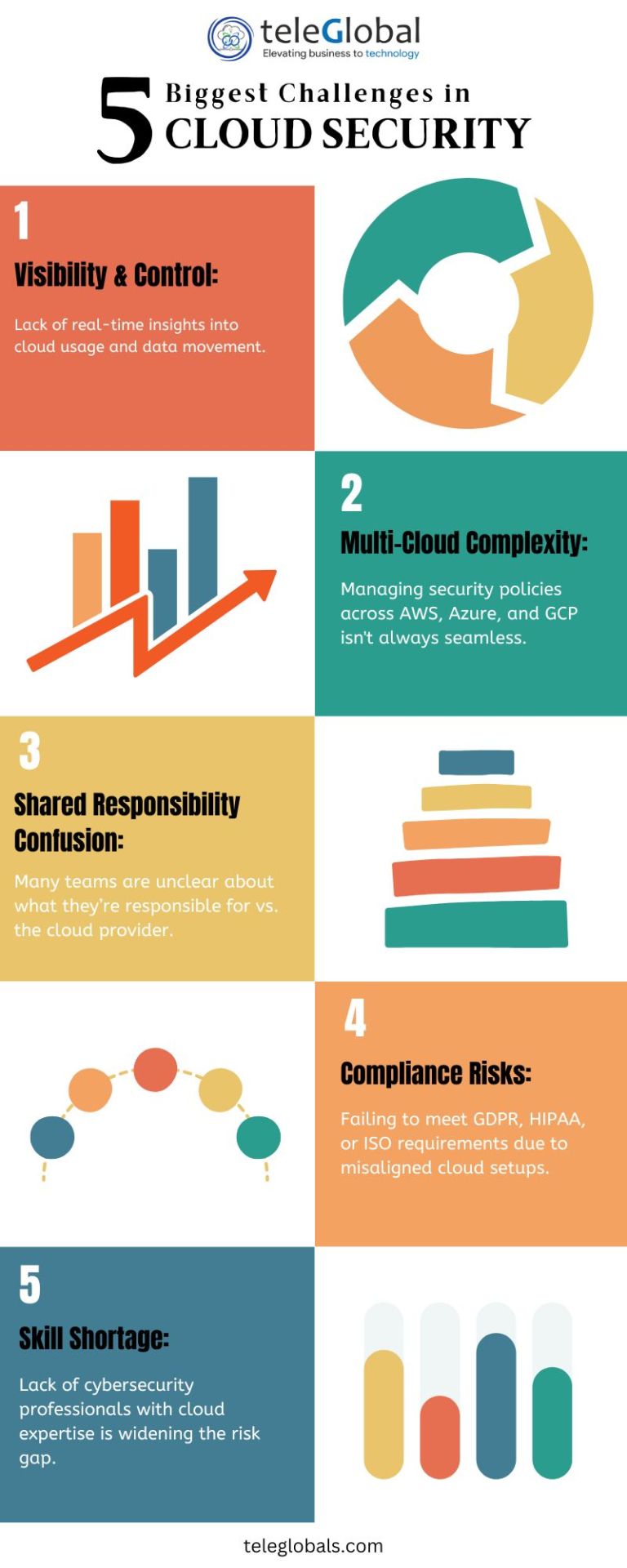
Choosing the Right Software Prototype for Your Project
That brilliant idea for an app or software? It’s easy to get caught up in the excitement and want to jump straight into coding. But what if you could test drive your concept, catch problems early, and get real feedback before spending a fortune? That's the magic of Software Prototypes.
Think of it as a dressing function for your software. It’s about creating a working model to see how your idea feels and functions in the real world. According to a helpful guide by TeleGlobals, the trick is picking the right kind of rehearsal for your show. Let's break the options in easy terms:
The Quick Sketch (Throwaway Prototype): Imagine sketching your idea on a napkin to see if it makes sense. This is the digital version—a fast, low-cost model built to test a core concept. You'll gather crucial feedback and then, as the name implies, toss the prototype and build the real thing from scratch, only smarter.
The Growing Sapling (Evolutionary Prototype): This approach starts with a small, basic version of your product that actually works. Then, based on user input, you continuously water, prune, and grow it—adding features and refining it over time. This tiny sapling eventually blossoms into your final, polished software.
The Lego Set (Incremental Prototype): Building a massive, complex application? Forget to build all at once. This method is like building a giant Lego castle one section at a time. You create and test separate, self-contained pieces of the software and then click them together as you go. This is a key aspect of prototype software development.
The "Looks First" Model (Extreme Prototype): This one is all about the user experience, especially for websites and web apps. You build the front-end of the website—the part that users see and interact with at first glance. It looks and feels like a finished product, but the behind-the-scenes mechanics are simulated. Once the look and feel are perfect, a critical step in UI UX design software, you build the engine to make it all run.
Choosing your path isn't just a technical decision; it's a strategic one. By matching your project's needs with the right prototyping style, you're not just building software—you're building it right.
Read More:
#Software Prototyping#Prototype Development#Software Development#UI/UX Design#Throwaway Prototype#Evolutionary Prototype#Incremental Prototype#Extreme Prototype#App Development#Web Development#Product Management#Agile Development#cloud service providers#cloud consulting services#aws managed services#aws cloud consulting services#aws consulting services#cloud services
0 notes
Text
Boost Quality with Automation Testing Services

Software testing has always been a vital component of the development lifecycle, acting as a safeguard against errors, inefficiencies, and potential vulnerabilities. But in the fast-paced, innovation-driven world of modern IT, Automation Testing Services are no longer a luxury—they are a necessity.
As digital transformation accelerates and user expectations evolve, businesses are under increasing pressure to deliver flawless applications faster than ever. That’s where automated solutions come in. They allow teams to detect bugs early, enhance test coverage, and ultimately improve release cycles while keeping quality intact.
In this article, we’ll explore the ins and outs of Automation Testing Services, when and how to use them, and how they align with broader Software Testing Services and Agile Development Services for high-performing tech organizations.
What Are Automation Testing Services?
Defining Automation Testing Services
Automation Testing Services refer to the use of specialized software tools and frameworks to execute pre-scripted tests on a software application before it is released into production. These tools compare actual outcomes with expected outcomes, flagging bugs without human intervention.
Core Components of Automation Testing
Test Scripts: Written code that automates test cases.
Automation Frameworks: Reusable structures to streamline test case development (e.g., Selenium, Appium, TestNG).
Continuous Integration/Continuous Deployment (CI/CD): Tools like Jenkins integrate automated tests into development pipelines.
Reporting Tools: Provide real-time feedback and dashboards.
Why It Matters
He or she using manual testing alone can only go so far. Manual tests are repetitive, time-consuming, and susceptible to human error. Automated tests are consistent, faster, and can run 24/7, ensuring comprehensive and ongoing validation of code quality.
When to Use Automated Software Testing Services
Strategic Moments for Test Automation
Knowing when to use Automated Software Testing Services can significantly affect development costs and outcomes. They’re ideal when:
The application is stable: Changes to UI and features are infrequent.
Regression testing is frequent: Automation can rerun tests faster and with consistency.
Load and performance tests are needed: Simulating thousands of users manually is impractical.
You want to integrate with CI/CD: Test automation complements Agile and DevOps workflows.
Automation is Not a One-Size-Fits-All
They should still use manual testing when:
Exploratory or usability testing is needed.
The application is in the very early stages of development.
Business logic is still being defined or rapidly changing.
Your Checklist for Partnering with an Automation Testing Company
What to Look for in an Automation Testing Partner
Before committing, use this checklist to evaluate the potential of an Automation Testing Services provider:
1. Technical Expertise
Do they understand your domain?
Can they work with tools like Selenium, Cypress, or Playwright?
2. Agile Compatibility
Do they align with your Agile Development Services model?
Can they work in iterative sprints with flexible goals?
3. Tool Integration
Do their automation tools integrate with your CI/CD pipeline?
4. Reporting and Documentation
Are their reporting tools transparent and actionable?
5. Security Practices
Is test data handled securely?
Are they compliant with GDPR, HIPAA, etc.?
6. Test Maintenance Capabilities
Can they update test scripts when your app changes?
7. Proven Experience
Do they have a history of delivering reliable Software Testing Services?
Benefits of Automation Testing Services
Why Organizations Rely on Test Automation
1. Speed and Efficiency
They can run tests in seconds that would take hours manually.
2. Reusability
Test scripts can be reused across different projects, reducing duplication.
3. Cost Effectiveness
Although initial setup costs are higher, automation saves money in the long run.
4. Increased Coverage
Automated scripts can test a broader set of conditions and variables.
5. Continuous Testing
Test early, test often—an ideal match for Agile Development Services.
How Automation Testing Complements Software Testing Services
The Relationship Between Manual and Automated Testing
It’s important to note that Automation Testing Services are a subset of broader Software Testing Services, which include:
Functional Testing
Usability Testing
Compatibility Testing
Security Testing
While automation covers repetitive tasks, manual efforts still play a key role in exploratory and human-centric validation.
Blended Strategy Works Best
They use automation for consistency and manual testing for creative, one-off scenarios. This hybrid model leads to better coverage and more reliable outcomes.
How Agile Development Services Fuel Automation
Agile and Test Automation: A Perfect Match
Agile Development Services thrive on rapid iterations and continuous feedback. Test automation aligns perfectly by providing fast feedback loops and reducing time-to-market.
Automation in Agile Sprints
He or she using Agile will benefit from automation at multiple points:
Unit tests after each code check-in.
Integration tests during daily builds.
Regression tests before releases.
Tools That Work Well in Agile Environments
Jenkins + Selenium: For CI/CD pipelines.
JIRA + Zephyr: For test management.
Docker + Kubernetes: For test environment orchestration.
Trends Shaping the Future of Automation Testing
What’s New in 2025?
1. AI-Powered Testing
AI tools can now write and optimize test cases automatically. They reduce maintenance and make testing more intelligent.
2. Scriptless Automation
Tools like TestCraft and Katalon offer low-code/no-code platforms, allowing even non-technical users to create test scenarios.
3. Shift-Left Testing
Testing starts earlier in the lifecycle, even before coding begins.
4. Hyperautomation
The combination of multiple automation technologies to streamline not just testing but also test management and reporting.
Key Takeaways
Automation Testing Services speed up testing, enhance coverage, and support continuous integration.
Use automation strategically—when apps are stable and regression tests are frequent.
Align with partners that support your CI/CD and Agile Development Services.
Software Testing Services still require manual testing in many areas—automation is not a silver bullet.
Embrace the latest trends like AI, scriptless automation, and shift-left strategies.
Conclusion
In today’s software landscape, Automation Testing Services are more than just a technical upgrade—they’re a necessity for businesses that want to stay competitive, agile, and customer-focused.
They enhance efficiency, reduce human error, and enable fast, reliable deployment cycles that are essential in Agile Development Services environments.
Still, automated testing is not the only answer. A thoughtful blend of automated and manual Software Testing Services creates the best results—ensuring software is robust, user-friendly, and ready for the demands of the market.
By integrating the right tools, adopting a flexible mindset, and partnering with experienced providers, companies can truly reap the benefits of automated testing.
#Automation Testing Services#Automated Testing Services#Automation Testing Company#Test Automation Services#Software Testing Services#Agile Development Services
0 notes
Text
GQAT Tech’s QA Arsenal: Powerful Tools That Make Quality Assurance Smarter
In this technology-driven age, delivering high-quality software is not an optional function but a necessity. Clients now expect us to produce digital products— apps, websites, etc.-- that are made quickly and error-free. The best way to achieve this is with a quality assurance (QA) process and effective tools to adapt to their needs.
The GQAT Tech QA team calls their QA efficient and effective tools combined, and their QA arsenal productive platforms, automation, tools, and proven processes. These testing tools and approaches can help a QA team find bugs more quickly, decrease hands-on effort, and allow more test coverage depending on the software project.
Now, let's look at what a QA Arsenal is, why it is important, and how QA will help your business produce better software.
What is the QA Arsenal?
The "QA Arsenal" refers to the collection of tools, frameworks, and strategies at GQAT Tech that the QA team employs to provide quality testing to clients. The QA Arsenal is like a toolbox, where everything a tester needs to complete the project is in the toolbox.
It includes:
Automation testing tools
Manual testing techniques
Defect tracking systems
Performance testing platforms
Mobile and web testing tools
CI/CD integrations
Reporting and analytics dashboards
What Makes GQAT’s QA Arsenal Unique?
We do not use tools haphazardly. We use the most appropriate tools based on the client's type of project, technology stack, service timeline, and quality. The QA Arsenal is designed to offer flexibility and therefore considers:
Web apps
Mobile apps
Embedded systems
IoT devices
Enterprise software
Whether functional test, compatibility test, API test, performance test, GQAT Tech utilizes a custom mixture of tools to ensure that it is reliable, secure, and ready for launch.
Tools Included in the QA Arsenal
Here are some common tools and platforms GQAT Tech uses:
🔹 Automation Tools
Selenium – For web application automation
Appium – For mobile app automation
TestNG / JUnit – For running and managing test cases
Robot Framework – For keyword-driven testing
Postman – For API testing
JMeter – For performance and load testing
🔹 Defect & Test Management
JIRA – To log, track, and manage bugs
TestRail / Zephyr – For test case management
Git & Jenkins – For CI/CD and version control
BrowserStack / Sauce Labs – For cross-browser and device testing
How It Helps Clients
Using the QA Arsenal allows GQAT Tech to:
Detect Bugs Early – Catch issues before they reach end-users
Save Time – Automation reduces time spent on repetitive tasks
Test on Real Devices – Ensures compatibility across systems
Generate Reports – Easy-to-read results and test status
Integrate with DevOps – Faster release cycles and fewer rollbacks
Improve Product Quality – Fewer bugs mean a better user experience
Real Results for Real Projects
GQAT Tech’s QA Arsenal has been successfully used across different domains like:
FinTech
Healthcare
E-commerce
Travel & Transport
EdTech
AI and IoT Platforms
With their domain expertise and knowledge of tools, they help businesses go faster, mitigate risks, and build customer diligence.
Conclusion
Building a great QA team is essential, but having them equipped with the right tools makes all the difference. GQAT Tech’s QA Arsenal provides their testers with everything they need to test faster, smarter, and more comprehensively.
If you are building a digital product and want to ensure it is released in the real world, you need a testing partner who does not leave things to chance. You need a testing partner with a battle-tested QA arsenal.
💬 Ready to experience smarter quality assurance?
👉 Explore GQAT Tech’s QA Arsenal and get in touch with their expert team today!
#QA Arsenal#Software Testing Tools#Quality Assurance Strategies#Automation Testing#Manual Testing#Selenium#Appium#Test Management Tools#CI/CD Integration#Performance Testing#Defect Tracking#Cross-Browser Testing#GQAT Tech QA Services#Agile Testing Tools#End-to-End Testing
0 notes